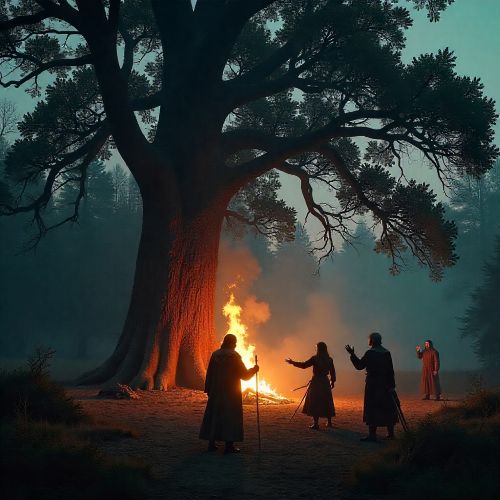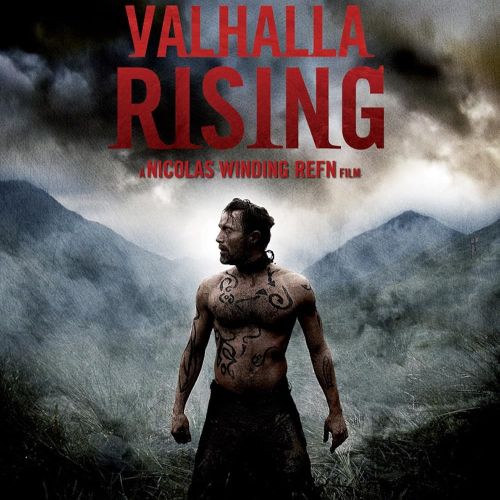Kantara Chapter 1 (2025)
| Description | |
|---|---|
| Country of Origin | India |
| Language | Kannada |
| Genre | Historical |
| Cast | Rishab Shetty, Jayaram, Rukmini Vasanth, Gulshan Devaiah |
| Directed by | Rishab Shetty |

Kantara Chapter 1 is not just a movie — it’s an invocation. Rishab Shetty returns to his mythic universe by peeling back the layers of faith and ancestry that powered the original Kantara. This time, he takes us to the origin of it all — the moment when man and god first forged a sacred covenant through blood, devotion, and land. The film dives deep into the cultural soul of coastal Karnataka, where ritual and reality blur, and every gust of wind seems to carry a whisper from the divine.
Unlike most myth-inspired stories that stay at the surface, Kantara Chapter 1 is rooted in the living traditions of Daiva worship — the spiritual bridge between humans and the divine guardians known as Bhootas. The Buta Kola ritual, already the centerpiece of the first film, here becomes a cosmic drama. What was once a spectacle is now revelation: the Daivas are not just protectors of land; they are ancestral deities who embody balance, duty, and divine fury. Shetty’s world doesn’t just show gods — it shows what it costs to serve them.
Set centuries before the events of Kantara (2022), the prequel follows a time when kingdoms were forming, rulers were rising, and tribal faith stood as the moral axis of civilization. The film’s mythological depth lies in its treatment of power — not political, but spiritual. The forest is sacred ground, its well the womb of the earth, and its deities the guardians of equilibrium. When human greed crosses these divine borders, nature itself retaliates. This central conflict feels ancient and universal — echoing myths of Shiva’s wrath, Gaia’s retribution, or the curse of Bhumi Devi.
Shetty’s performance as the chosen one — the man destined to channel both rage and divinity — reflects a timeless archetype: the reluctant vessel of the gods. The film’s possession sequences, where the divine energy overtakes the human, are some of Indian cinema’s most powerful visual interpretations of spiritual surrender. The sound of drums, the shimmer of firelight on sacred paint, the rhythmic chants — all serve as portals to a world where belief has physical form. Here, faith isn’t metaphor; it’s motion, sweat, and trance.
What makes Kantara Chapter 1 mythologically rich is its refusal to sanitize spirituality. The Daivas are not serene — they are fierce, unpredictable, and demanding. They don’t bless blindly; they balance justice. This duality mirrors the nature of the gods across many Indian traditions — like Kali’s destructive compassion or Narasimha’s righteous rage. In Shetty’s narrative, these cosmic truths are local, yet universal — the tribal deity becomes an avatar of eternal dharma.
Visually, the film immerses viewers in a mythic landscape that feels alive. Every shot of mist-covered trees and glowing embers speaks of sacred presence. The use of natural elements — wind, soil, water, and flame — gives the story its elemental rhythm. The land itself is character, spirit, and scripture. When the protagonist invokes the Daiva, the moment feels less like a performance and more like a resurrection of something ancient and untamed.
But Kantara Chapter 1 isn’t flawless. The story’s first act takes its time, building atmosphere before diving into divine chaos. Some may find the pacing slow or the narrative dense with ritual detail, but this deliberate rhythm serves the film’s mythic tone. The payoff — a climactic sequence that merges man, god, and destiny — is breathtaking and almost operatic in intensity. It’s myth rendered through flesh, dance, and fire.
What truly lingers is the film’s reverence for indigenous spirituality. While many Indian mythological films lean toward the grand pantheon of gods, Kantara Chapter 1 remains grounded in the faith of the forest — the unseen deities that dwell in the spaces between worship and wilderness. The film becomes both preservation and prayer — a cinematic offering to traditions often overshadowed by mainstream religion.
In essence, Kantara Chapter 1 is about guardianship — of belief, of land, of lineage. It’s about the unbreakable bond between people and the spirits that watch over them. Rishab Shetty doesn’t just tell a story; he conducts a ritual. Through him, mythology doesn’t stay in textbooks or temples — it returns to the soil, fierce and alive.
Kantara Chapter 1 proves that mythology, when treated with reverence and authenticity, doesn’t need translation — it only needs to be felt.







